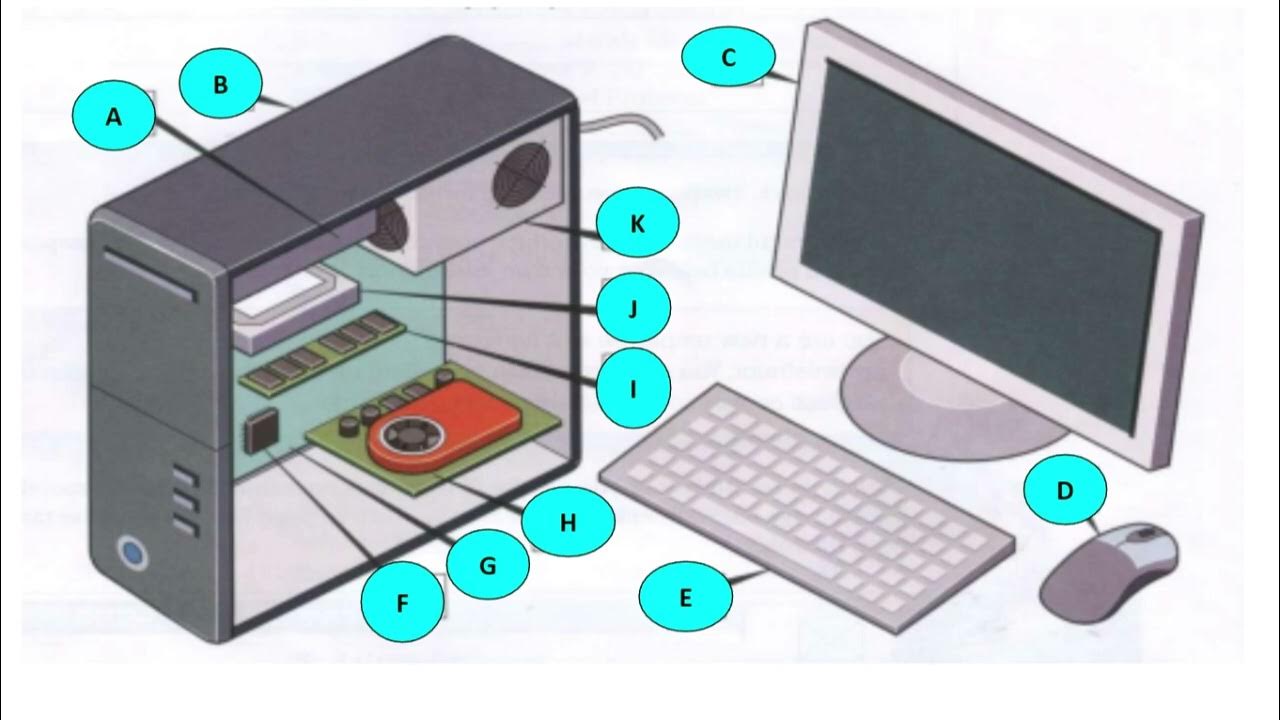AS & A Level Computer Science (9618) - Chapter 8: System Software
Summary
TLDRIn this educational video, James, a computer science graduate turned teacher, delves into the world of system software, essential for a computer's operation. He explains that system software acts as a platform for application software and manages hardware resources. James covers the evolution of operating systems, their role as a middleman between hardware and software, and their tasks like user interface provision, resource management, and security. He also explores utility software, program libraries, language translators, and integrated development environments, highlighting their significance in maintaining system functionality and aiding programmers.
Takeaways
- 💻 System software is essential for a computer to function, providing a platform for application software and managing hardware resources.
- 🖥️ The operating system (OS) acts as a middleman between hardware and application software, controlling hardware and facilitating interaction with applications.
- 🔧 Utility software, such as antivirus and disk cleanup tools, performs specific tasks to maintain and enhance the functionality of a computer system.
- 🗂️ Program libraries or subroutines are pre-written code snippets that can be reused by programmers to save time and effort, improving efficiency in software development.
- 🔗 Dynamic link libraries (DLLs) allow programs to access subroutines at runtime without the need to copy them, reducing storage space and memory usage.
- 🔧 Translators, including interpreters and compilers, convert high-level programming language code into machine-readable code, with interpreters executing line by line and compilers translating the entire code at once.
- 🛠️ Integrated Development Environments (IDEs) offer a comprehensive suite of tools for programmers, including code editing, debugging, and building capabilities, all within a single interface.
- 💡 IDE features like pretty printing, context-sensitive prompts, dynamic syntax checking, and code block expansion/collapsing enhance the coding experience and productivity.
- 🔄 Java introduces a unique approach by using both compilation and interpretation, with Java bytecode being interpreted by the Java Virtual Machine (JVM) for platform-independent execution.
Q & A
What is system software?
-System software is the type of computer program that provides a platform for running application software and manages computer hardware resources.
What are the main tasks carried out by an operating system?
-Operating systems control hardware, interact with application software, provide a user system interface, manage resources, handle memory management, manage device drivers, and manage files.
What is the difference between a graphical user interface and a command line interface?
-A graphical user interface allows users to interact with the computer using graphics, such as icons on a desktop, while a command line interface is text-based and often used by programmers to communicate with the system.
How does an operating system manage resources?
-The OS manages resources by allocating RAM and processing power to various processes, scheduling tasks to ensure each process gets sufficient time and resources, and resolving conflicts when multiple processes require resources simultaneously.
What is the purpose of utility software?
-Utility software is designed to perform specific tasks to maintain the overall functionality and maintenance of a computer system, such as cleanup, antivirus scanning, and file compression.
What is a program library and how does it help programmers?
-A program library, also known as a subroutine, is a collection of pre-written code snippets that can be reused by programmers to perform specific operations, reducing the time and effort needed to write code from scratch.
What is the role of a translator in system software?
-Translators in system software convert human-readable code into machine-readable code. They can be either interpreters, which execute code line by line, or compilers, which translate the entire code into machine code at once.
What is the difference between an interpreter and a compiler?
-An interpreter translates and executes high-level code line by line during execution, while a compiler translates the entire high-level code into machine code all at once before execution.
What is an Integrated Development Environment (IDE) and what features does it provide?
-An Integrated Development Environment is a software that provides programmers with a single interface for code editing, debugging, and building capabilities. Features include pretty printing, context-sensitive prompts, dynamic syntax checking, and debugging tools.
How does Java's approach to program execution differ from traditional methods?
-Java uses a distinct approach by compiling code into bytecode, which is then interpreted by the Java Virtual Machine during runtime, allowing for portability across different computers equipped with a Java Virtual Machine.
Outlines

このセクションは有料ユーザー限定です。 アクセスするには、アップグレードをお願いします。
今すぐアップグレードMindmap

このセクションは有料ユーザー限定です。 アクセスするには、アップグレードをお願いします。
今すぐアップグレードKeywords

このセクションは有料ユーザー限定です。 アクセスするには、アップグレードをお願いします。
今すぐアップグレードHighlights

このセクションは有料ユーザー限定です。 アクセスするには、アップグレードをお願いします。
今すぐアップグレードTranscripts

このセクションは有料ユーザー限定です。 アクセスするには、アップグレードをお願いします。
今すぐアップグレード5.0 / 5 (0 votes)






